Your homepage is the first impression most visitors have of your business. It’s not just a welcome mat; it’s your digital storefront, your brand’s elevator pitch, and the gateway to the rest of your website. Homepage content plays a pivotal role in conveying your value, building trust, and guiding visitors to take the next step, whether that’s booking a consultation, exploring services, or making a purchase.
Writing homepage content for a website involves a delicate balance: you want to be clear, concise, and persuasive while also optimizing your copy for search engines. In this comprehensive guide, we’ll break down how to write homepage copy that works, including strategy, SEO best practices, examples, and practical tips. By the end, you’ll have a roadmap for creating homepage content that converts.
Key Takeaways
- Your homepage is your digital storefront and should clearly communicate who you are, what you offer, and the next step visitors should take.
- A strong strategy—with clear messaging, essential elements like headlines, value propositions, social proof, and CTAs, plus SEO integration—ensures your homepage both engages users and drives conversions.
- Keep copy concise, visitor-focused, and aligned with design for maximum impact, and update content regularly to stay relevant and competitive.
The Purpose of Your Home Page
Your website homepage is more than just a landing page. It’s the central hub of your online presence, and its primary purpose is to:
- Introduce your brand in a clear and compelling way.
- Communicate your value proposition so visitors understand why they should choose you.
- Guide visitors toward the next step, whether that’s exploring other pages, signing up for a newsletter, or booking a service.
- Build trust with social proof, testimonials, and evidence of expertise.

Before diving into how to write homepage copy, it’s critical to understand the five questions your homepage must answer. Think of these as the questions your potential clients or customers are silently asking when they first land on your site.
The 5 Questions Your Homepage Must Answer
Your homepage is often the first impression visitors have of your brand, so every element should serve a clear purpose. To make sure your website captures attention and builds trust, it needs to answer the most important questions your audience is asking. Below are the five key questions your homepage must address to engage visitors and drive results.
#1: Who are you?
Visitors want to know if you’re the type of person or business they want to work with. Your homepage should clearly convey your brand’s identity, tone, and personality. This is often accomplished through a strong hero section, imagery, and concise messaging that reflects your business’s character.

#2: What do you specialize in?
Visitors need reassurance that you’re qualified. Showcase your expertise through credentials, awards, years of experience, client logos, or case studies. For example, a marketing consultant could highlight certifications, successful campaigns, or notable client results.
#3: Who is your ideal client?
Your homepage should clearly communicate your target audience. Are you catering to small business owners, busy professionals, or enterprise clients? Clarifying who you serve ensures visitors immediately know whether your services are relevant to them.
#4: How will your services help me?
Benefits-focused copy answers the “what’s in it for me?” question. Don’t just list features; show visitors how your products or services solve their problems or improve their lives. For example, instead of saying “We offer social media management,” you could say “We help businesses save time and grow their audience through expert social media management.”

#5: What do I do next?
A strong homepage guides visitors to take action. Include clear CTAs like “Book a Consultation,” “View Our Services,” or “Get Your Free Guide.” Without direction, visitors may leave your site without engaging.
Answering these five questions effectively ensures your homepage content is user-centric, engaging, and conversion-oriented.
Why Every Effective Homepage Needs a Solid Homepage Content Strategy
A homepage content strategy provides a roadmap for creating effective copy that aligns with your business goals. Without a strategy, homepage content can easily become cluttered, confusing, or ineffective at converting visitors. A strategic approach ensures that every word, image, and CTA serves a purpose.
A strong homepage content strategy should:
- Ensure messaging is clear and consistent,
- Align copy with SEO goals, driving organic traffic,
- Focus on user intent, helping visitors find the information they need quickly, and
- Provide a blueprint for updating content regularly to reflect new services or changes in your industry.
How to Create a Homepage Content Strategy
Creating a homepage that truly connects with your audience starts with a solid content strategy. Your homepage content strategy serves as a roadmap, guiding what to say, how to say it, and how to organize your messaging for maximum impact. In this section, I’ll break down the steps to build a strategy that turns visitors into engaged customers.

Identify Your Audience
Understand your ideal visitors: their pain points, desires, and questions. Conduct surveys, analyze analytics, and review competitor sites to gain insights.
Define Your Goals
Determine what actions you want visitors to take. Do you want them to book a consultation, explore services, or subscribe to a newsletter? Your homepage copy should guide them toward this goal.
Map the Customer Journey
Plan the sequence of content on your homepage. The journey should flow naturally: headline → value proposition → benefits → social proof → CTA.
Plan SEO Integration
Identify primary keywords and secondary keywords and incorporate them naturally into headings, subheadings, and body copy.
Review and Iterate
Monitor metrics like bounce rate, time on page, and click-through rate to understand how your homepage content performs. Regularly update your strategy based on performance data.

What Your Homepage Should Include: Key Elements for Maximum Impact
Your homepage is your digital storefront—it’s where first impressions are made and visitors decide whether to explore further. To create homepage content that engages, builds trust, and drives action, every element should serve a clear purpose. Below is a guide to the essential components of a successful homepage content strategy:
Strong Headline and Subheading
Your headline is the first thing visitors notice, so make it count. Incorporate your primary keyword and clearly convey your value. Follow up with a subheading that expands on the headline, providing context and encouraging visitors to scroll further. Well-crafted website homepage content sets the tone for the rest of your site.
Clear Value Proposition
A compelling value proposition explains what sets your business apart. It answers the crucial question: why should someone choose you over a competitor? This ensures your homepage content strategy highlights your unique benefits and guides visitors toward taking action.
About Section
Introduce your business with a short, engaging about section. Share who you are, your expertise, and what drives your business. This builds authority and personality, making your website homepage content more relatable and trustworthy.
Overview of Services
Provide concise descriptions of your key services, highlighting what you offer. Include internal links to dedicated service pages so visitors can explore more details. Integrating these links strengthens your homepage content SEO and improves site navigation.
Overviews of Other Key Pages
Give brief summaries of other important pages, such as your blog, resources, or additional services. These previews encourage visitors to click through, increase time on site, and boost SEO. For example: “Explore our blog for tips on creating compelling website copy, or view our services to see how we can help your business grow.”
Social Proof
Build credibility by showcasing testimonials, client logos, awards, or case studies. Social proof reinforces trust in your website homepage content and reassures visitors that your business delivers results.
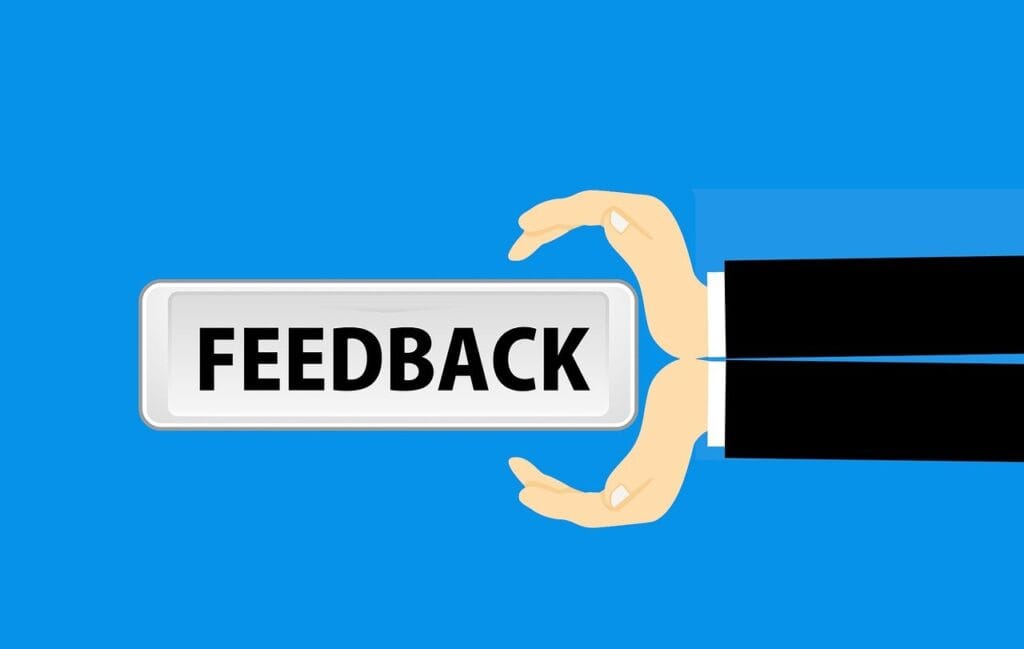
Strong Calls to Action (CTAs)
Guide visitors toward the next step with clear, action-oriented CTAs. Use verbs like “Book Now,” “Get Started,” or “Learn More,” and place CTAs strategically throughout the homepage. Strong CTAs ensure your homepage content strategy drives conversions effectively.
Maximizing SEO for Your Homepage Copy
SEO ensures your homepage is discoverable by search engines while remaining user-friendly. Key SEO tactics for homepage content include:
- Using target keywords in headings, subheadings, and body copy,
- Including internal links to important pages,
- Optimizing images with alt text and proper sizing,
- Writing compelling meta titles and meta descriptions, and
- Updating content regularly to reflect new offerings, trends, or promotions.
Research shows that 720% of consumers use Google to find local businesses before making a purchase. Incorporating location-specific keywords can help attract the most suitable visitors to your homepage.
Writing Homepage Content That Captivates and Converts
Great homepage content not only informs but also engages, builds trust, and encourages action. To make your homepage copy work harder for your business, focus on these key tips:
Be Concise
Web visitors skim rather than read, so clarity is crucial. Break down complex ideas into short, digestible sentences. Avoid filler content and get straight to the point, making it easy for users to understand your value immediately. Concise homepage content keeps your site clean, improves readability, and encourages visitors to engage further.
Use a Clear Structure
A well-organized homepage helps visitors find the information they need quickly. Use bullet points, numbered lists, bold text, and descriptive subheadings to guide the eye. Structuring your website homepage content for easy scanning ensures users absorb key messages efficiently and stay on your site longer.
Focus on the Visitor
Your homepage content should answer the question: “What’s in it for me?” Highlight how your services solve problems and deliver tangible benefits rather than just listing features. This visitor-focused approach strengthens your homepage content strategy, showing why your business is the best choice and encouraging users to take action.

Integrate with Design
Content and design go hand in hand. Use whitespace, images, icons, and graphics to complement your homepage content. Thoughtful integration of visuals improves comprehension, directs attention to key messages and CTAs, and ensures your website homepage content is both attractive and effective.
Adopt a Conversational Tone
Write as if you’re speaking directly to your visitor—friendly, approachable, and relatable, while remaining professional. Avoid jargon or overly technical language that could alienate readers. A conversational tone makes your homepage content feel more personal, builds trust, and encourages visitors to explore other pages on your website.
Great Website Homepage Content Examples
When it comes to homepage content, sometimes it’s easier to learn by example. The following brands have nailed the essentials—clear messaging, strong design alignment, and a visitor-focused approach. These examples show how different industries put the same core principles into action, giving you inspiration for your own website homepage content.
Babbel
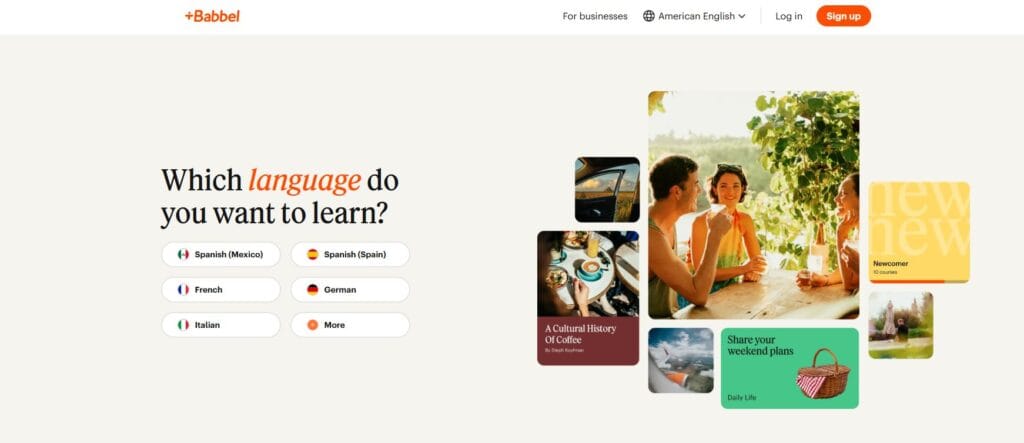
Babbel’s homepage combines a concise headline: “Which language do you want to learn?” along with clear benefits and user testimonials.
Heinz
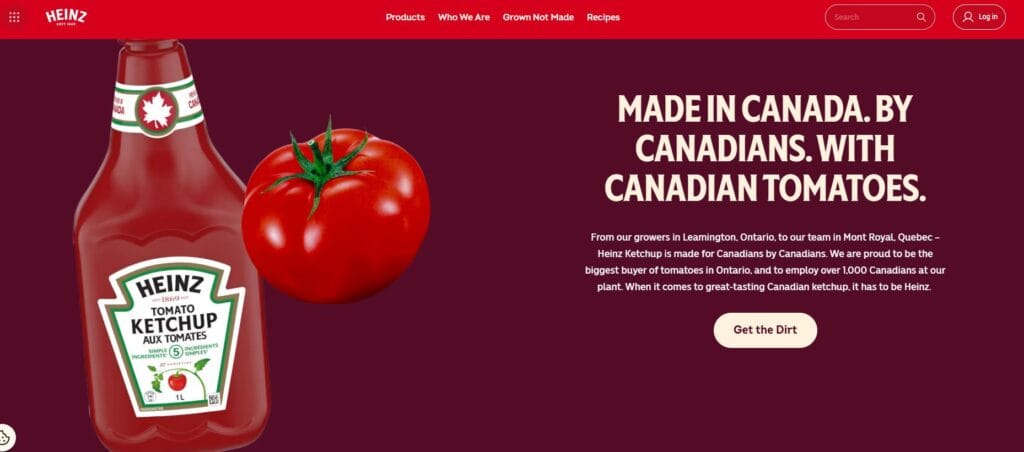
Uses audience-specific language to engage visitors instantly.
Wagepoint
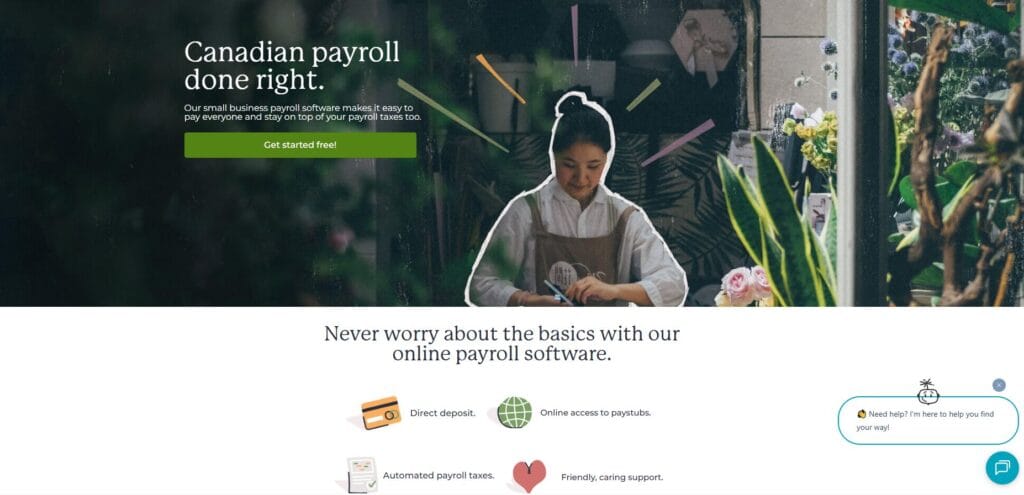
Wagepoint’s homepage is an excellent example of how to use a compelling headline to capture attention, highlight the benefits of your products or services to spark interest and desire, and guide the reader toward a clear call to action.
Hubspot
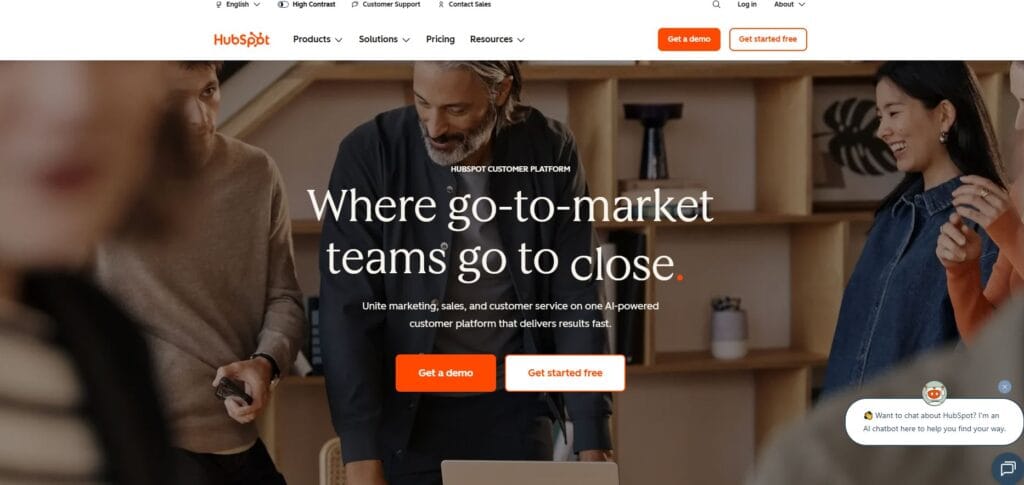
The homepage grabs attention with a clear, benefit-driven headline and subheading, immediately encouraging engagement through prominent, risk-free CTAs. I also love how it uses statistics and figures to showcase its community, reinforcing its value proposition and building trust through social proof.
Case Study: Sarah McKenzie Home Page
I’d be remiss if I didn’t take a moment to review my own site! While I admit I’m a bit biased, my homepage puts into practice many of the strategies I’ve outlined here. It’s a real-world example of how strong homepage content can communicate value, guide visitors, and encourage action.
Clear headline featuring “homepage content” and other keywords

Overview of services with links to deeper pages
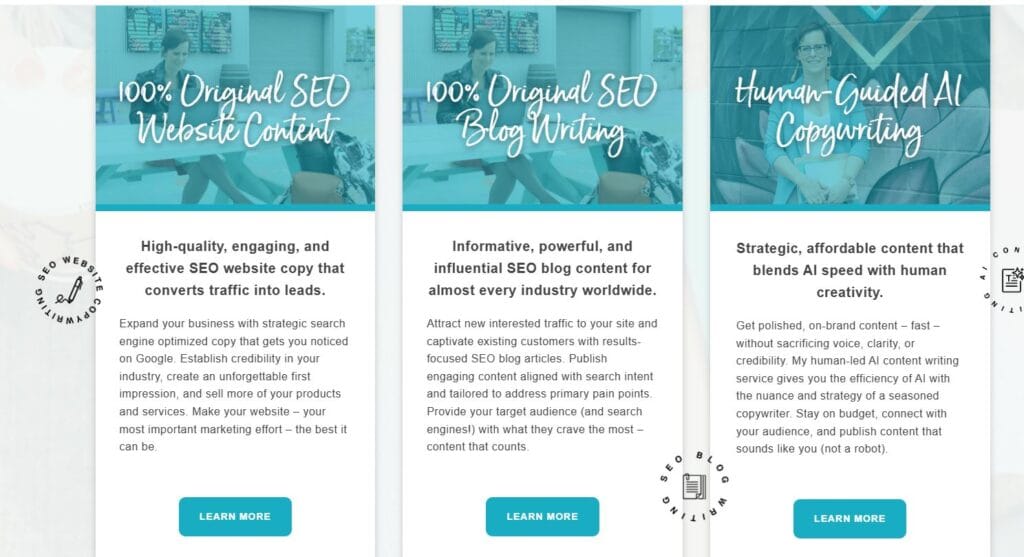
Value proposition emphasizing expertise in copywriting and content strategy
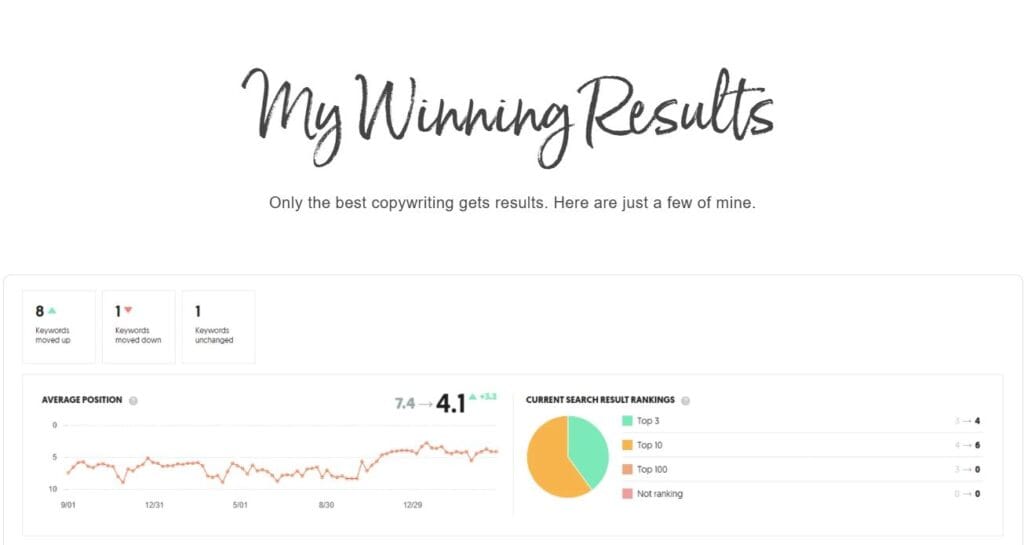
Client testimonials and logos for social proof

Strong CTAs prompting visitors to book consultations or view packages
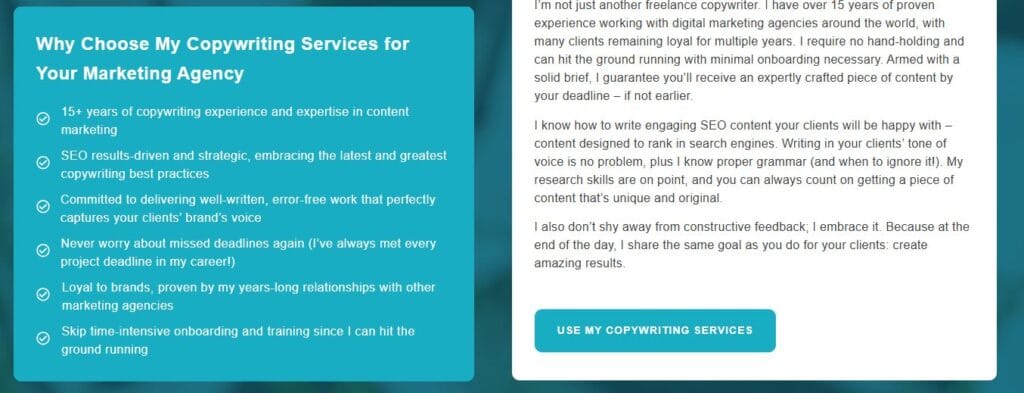
The Ultimate Homepage Content Checklist
Is your homepage content working as hard as it could be? To make a strong first impression and get the results you want, your homepage needs to include several critical elements. Here’s a breakdown of what matters most:
- Strong headline and subheading
- Clear value proposition
- Overview of services
- About section
- Short summaries of additional key pages
- Social proof
- Strong CTAs
- Keywords incorporated for SEO
- Copy aligned with design
- Concise, visitor-focused, and scannable
Conclusion: Make Your Homepage Content Work for You
Your homepage is more than a digital introduction; it’s a strategic tool for building credibility, guiding visitors, and driving conversions. By following a structured homepage content strategy, integrating SEO best practices, and focusing on visitor benefits, you can create homepage content for your website that performs and converts.
FAQs
What content should be on a homepage?
Include a strong headline, value proposition, service overview, social proof, about section, internal links, and clear calls to action.
How can I write homepage copy?
Identify your audience, craft a clear value proposition, answer the five key homepage questions, and create concise, benefit-focused, and SEO-optimized copy with strong CTAs.
How often should homepage website content be updated?
Update at least quarterly or whenever new products, services, or promotions are available. SEO updates should occur twice per year to remain competitive.
